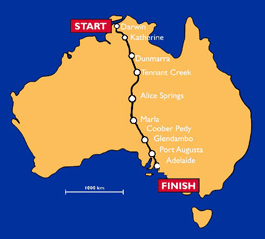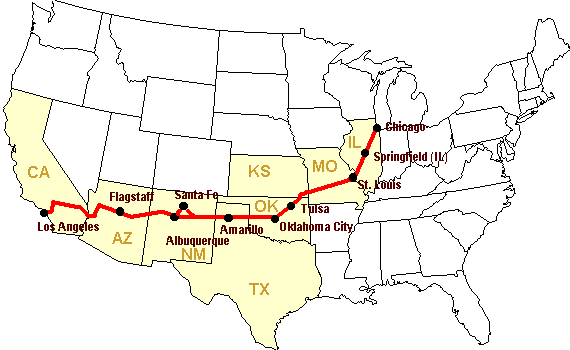|
|
||||||||||||||||||||||||||||||||||||||||||||||||||||||||||||||||||||||||||||||||||||||||||||||||||||||||||||||||||||||||||||||||||||||||||||||||||||||||||||||||||||||||||||||||||||||||||||||||||||||||||||||||||||||||||||||||||||||||||||||||||||||||||||||||||||||||||||||||||||||||||||||||||||
|
HOME | INDEX | AUTOMOTIVE | BLUEBIRD | ELECTRIC CARS | E. CYCLES | SOLAR CARS |
||||||||||||||||||||||||||||||||||||||||||||||||||||||||||||||||||||||||||||||||||||||||||||||||||||||||||||||||||||||||||||||||||||||||||||||||||||||||||||||||||||||||||||||||||||||||||||||||||||||||||||||||||||||||||||||||||||||||||||||||||||||||||||||||||||||||||||||||||||||||||||||||||||
|
Hans was determined to build on these developments and continue to drive on the strength of sunshine. With man's first walk on the moon still fresh in people's memory, the time was ripe for solar invention. He felt that a race was the answer and thus the energy R&D event, the World Solar Challenge, was born.
The first World Solar Challenge was staged in 1987, with a field of 23 fantastic cars led by the GM Sunraycer which completed the trip with an average speed of 67km/h. The cars in 1990 were a great improvement on 1987. Many competitors returned with the strength of experience, and new entries had another three years of R&D to create and refine their vehicles. The 1990 winner was the Biel team from a Swiss Engineering School. The townsfolk of Biel were responsible for donating one dollar each towards the success of the entry. With a school winning such a prestigious event, the World Solar Challenge became known as "Brain Sport".
1993 saw the 1987 GM Sunraycer record broken. Honda took the honours over Biel, and travelled 803 kilometres in one day. Yet again the entire field was impressive, and a sign of the event growing from strength to strength.
The goal of finishing the World Solar Challenge in four days was realised in 1996, when Honda repeated their performance with another stunning win, and a record average speed of 89.76 km/h. For most other competitors however, the race was far from over, with the remainder of the field spread out over 1700 km of the Stuart Highway. Over the ensuing six days a further 32 of the original 46 competitors would cross the finish line to complete their epic 3000km journey.
Following the 1996 event, Tholstrup sold up. The eventual winner of the bids was the State of South Australia, who announced an event in 1998, however many reasons lead to the "deferment" of the 1998 event, which was eventually run in 1999 under the new leadership of Chris Selwood. The 1999 event saw 43 teams from 14 countries traverse the continent, and the Australian "Aurora" team won the event.
A commitment to support the International Solar Energy Society World Congress in 2001 saw the event restaged once more, with new records set. 2001 also saw the introduction of the "Demonstration Class" which was designed to showcase vehicles exhibiting practical technology that has evolved from the World Solar Challenge.
An in depth evaluation of the aims and outcomes of the event, together with a survey of teams and stake holders showed the World Solar Challenge to be the premier solar car event in the world, with a large majority supporting a biennial program.
NORTH AMERICA
The 2003 North American Solar Challenge was a cross-country solar car rayce that was held from July 13 to 23, 2003. The Race ran from Chicago, Illinois, to Claremont, California along old Route 66. Teams faced varied climates, topography and road conditions. Everything that applies to the Australian challenge applies to the American challenges. The teams have to work just as hard no matter where the competition.
COMPETITION
Known as the ‘Brain-Sport’ of our time, World Solar Challenge entrants will traverse more than 3,000km of the Australian or American continents from tropical Darwin to Adelaide, or from Chicago to California in cars powered by nothing more than the sun. World Solar Challenges promotes and celebrates education and technical excellence, drawing attention to the imperatives of sustainable transport.
The ‘Challenges’, are to design and build a car capable of crossing Australia or America on the power of daylight, comprehends the most innovative research and development of alternative transport technologies. The World Solar Challenge attracts teams and individuals from corporations and universities all over the world. Fuelled by the spirit of friendly competition, the World Solar Challenge champions the creative integration of technical and scientific expertise across a wide range of disciplines, providing a focus for bright young minds. These minds are undoubtedly the very people who will deliver these technologies in the future, excelling in the fields of physics, electrochemistry, engineering, mathematics, multi-disciplined learning and personal development.
The interest from the academic world is so great that now almost 100 of the world’s top universities are involved in solar car projects, and creating public awareness of significant environmental issues, this event demonstrates the innovative nature of South Australians as well as promoting the adventure and ecotourism opportunities offered by the State. One of the unique propositions of the World Solar Challenge is that it is run in one stage. Once competitors have left Darwin at 8am on the first day, they are on their own. Apart from compulsory stops at the seven checkpoints, each team endeavours to travel as far as it can each day, but must make camp by 5pm each evening.
The
World Solar Challenge is a celebration of achievement, of courage
and the application of scientific knowledge in the field of solar
technology. This is the adventure of young people not only dreaming
of a safer, smarter, greener world, but of skilled young enthusiasts
working to make it a reality.
DARWIN TO ADELAIDE JOURNEY TIME
The 8th World Solar Challenge will depart Darwin on Sunday 25 September 2005. Scrutineering commences on Thursday 22 September, and most teams spend at least a week in Darwin preparing for departure.
Once competitors leave Darwin at 8am on the first day, they are on their own. Apart from compulsory stops at the seven checkpoints, each team endeavours to travel as far as it can each day, but must make camp by 5pm each evening.
Given perfect weather, the world’s best may well achieve their goal of reaching Adelaide in less than four days, but the adventure for most sees them setting up their bush camp, under a billion stars, for a few extra nights.
LINKS:
SOLAR CAR RACING EVENT A - Z
A dream can make all the difference under the sun - when a bunch of high school misfits in Hawaii, introduced by their new teacher (Halle Berry), attend a science fair in which they draw up inspiration to build their own solar car and win a trip to compete in the 1990 World Solar Challenge in Australia. One of my favourites NK
The teams below are either established, or considering competing in any of the attractions above. Please click on the hyperlinks for more information. Remember, it's not the winning that matters, it's taking part. Whatever car or result your team produces, simply taking part will be rewarding in terms of learning, achievement and fun.
SOLAR CAR TEAMS
Solar Cola for safer Solar car racing drivers
330ml Earth can - the World in Your Hand
|
||||||||||||||||||||||||||||||||||||||||||||||||||||||||||||||||||||||||||||||||||||||||||||||||||||||||||||||||||||||||||||||||||||||||||||||||||||||||||||||||||||||||||||||||||||||||||||||||||||||||||||||||||||||||||||||||||||||||||||||||||||||||||||||||||||||||||||||||||||||||||||||||||||
|
EDUCATION | SOLAR CAR RACING TEAMS | SOLAR CAR RACING EVENTS | FILMS | MUSIC | SPORT |
||||||||||||||||||||||||||||||||||||||||||||||||||||||||||||||||||||||||||||||||||||||||||||||||||||||||||||||||||||||||||||||||||||||||||||||||||||||||||||||||||||||||||||||||||||||||||||||||||||||||||||||||||||||||||||||||||||||||||||||||||||||||||||||||||||||||||||||||||||||||||||||||||||
|
The
content of this website is copyright © and design copyright 1991 and
2012 Electrick Publications and NJK. All rights reserved. The bluebird
logo |


